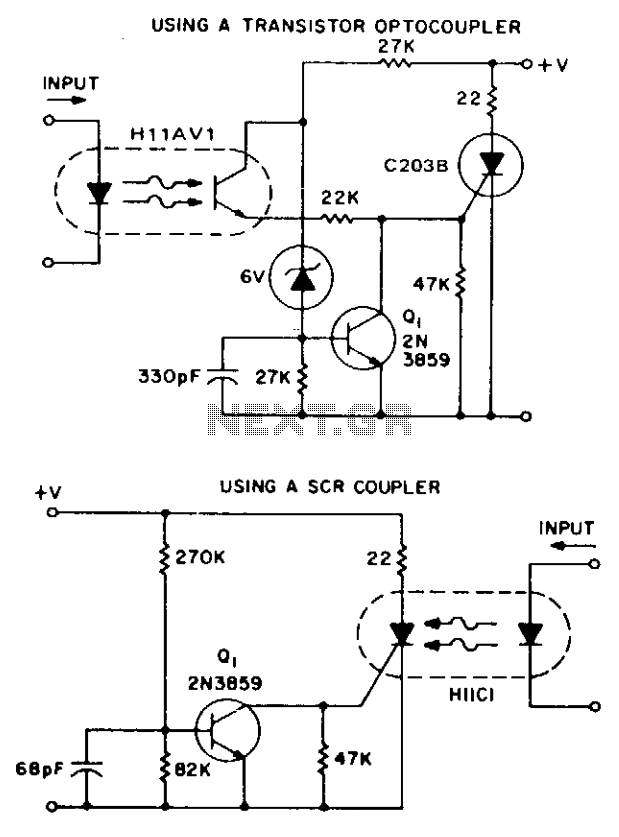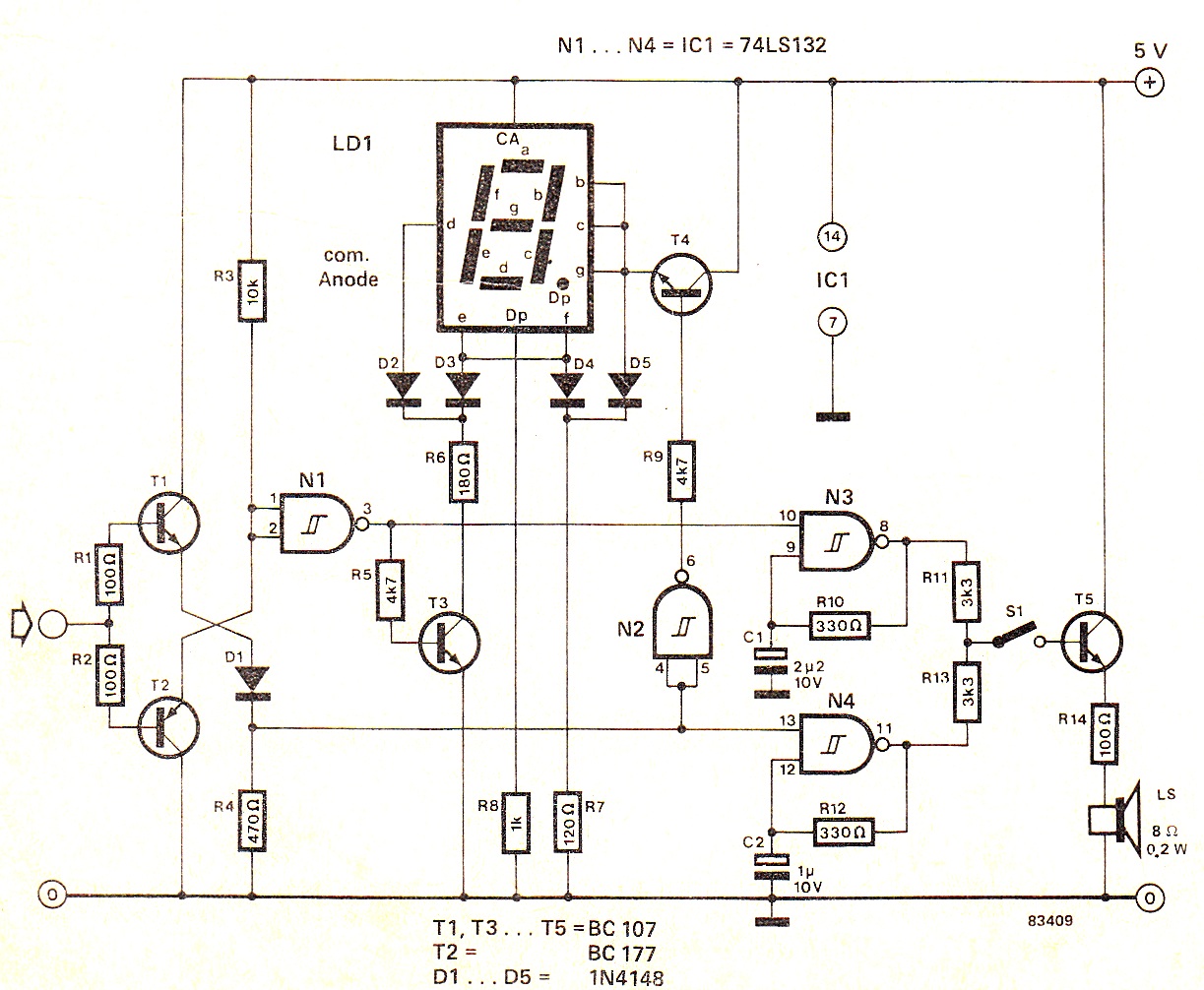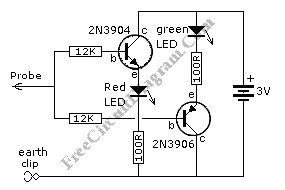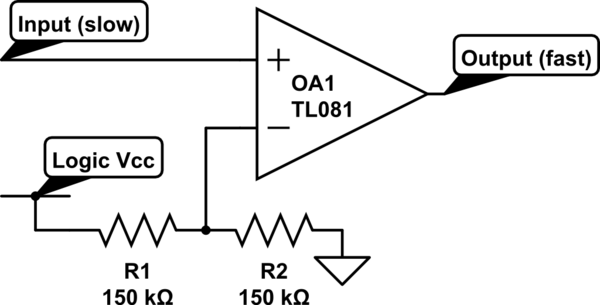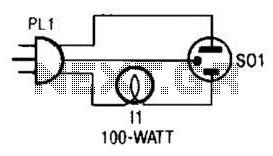
Logic Probes
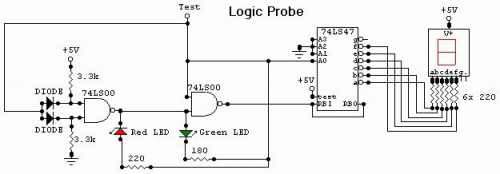
This circuit is a Logic Probe that indicates the logic state of any TTL logic circuit node. To operate, the probe must be supplied with the same power as the circuit being analyzed, including the same Vcc and GND. To check the logic level, the "Test" wire of the probe should be connected to the desired node of the circuit. If the level is Low, the probe will display a "zero" (0) and only the green LED will be illuminated. If the level is High, the probe will display a "one" (1) and only the red LED will be illuminated. If the level is Impedance, the probe will not display anything and no LED will be illuminated. The logic level is considered "Low" when the "Test" wire is connected to the ground of the circuit, with voltage between 0V and 2V. The logic level is "Impedance" when the "Test" wire is unconnected, with no voltage or voltage between 2V and 3V. The logic level is "High" when the "Test" wire is connected to the positive supply of the circuit, with voltage between 3V and 5V.
The Logic Probe circuit is designed to provide a simple and efficient means of determining the logic state in TTL (Transistor-Transistor Logic) circuits. It typically consists of a few key components: a voltage comparator, two light-emitting diodes (LEDs), and a resistor network.
The circuit operates by measuring the voltage at the test point through the "Test" wire. The voltage comparator compares the input voltage at this wire against preset thresholds that define the logic levels. For TTL circuits, the common thresholds are set to distinguish between Low, High, and Impedance states.
When the "Test" wire is connected to a node with a voltage below 2V, the comparator outputs a signal that activates the green LED, indicating a Low state. Conversely, if the voltage is between 3V and 5V, the comparator activates the red LED, indicating a High state. In the case where the wire is unconnected or floating, the comparator does not detect a valid voltage level, resulting in no LEDs being lit, which indicates an Impedance state.
The power supply for the Logic Probe is critical; it must match the Vcc of the circuit under test to ensure accurate readings. This is typically achieved through a simple connection to the circuit's power rails. The circuit is designed to be compact and portable, allowing for easy use in various testing scenarios.
Overall, the Logic Probe is an essential tool for engineers and technicians working with digital circuits, providing clear visual feedback on the state of logic signals without the need for complex equipment.This circuit is a Logic Probe. It indicates the logic state of the node of any TTL logic circuit. To do that, we have to supply the probe with the same power of the circuit that we want to analyse: same Vcc and same GND. To check the logic level, we must connect the "Test" wire of the probe to the desired node of the circuit that we want to check.
If the level is Low, the probe will display a "zero" (0) and only the green LED will be lighted. If the level is High, the probe will display a "one" (1) and only the red LED will be lighted. If the level is Impedance, the probe will display a nothing and no LED will be lighted. The logic level is "Low" when the "Test" wire is connected to the ground of the circuit (the voltage is between 0V and 2V). The logic level is "Impedance" when the "Test" wire is unconnected (it has no voltage or the voltage is between 2V and 3V).
The logic level is "High" when the "Test" wire is connected to the positive supply of the circuit (the voltage is between 3V and 5V). 🔗 External reference
The Logic Probe circuit is designed to provide a simple and efficient means of determining the logic state in TTL (Transistor-Transistor Logic) circuits. It typically consists of a few key components: a voltage comparator, two light-emitting diodes (LEDs), and a resistor network.
The circuit operates by measuring the voltage at the test point through the "Test" wire. The voltage comparator compares the input voltage at this wire against preset thresholds that define the logic levels. For TTL circuits, the common thresholds are set to distinguish between Low, High, and Impedance states.
When the "Test" wire is connected to a node with a voltage below 2V, the comparator outputs a signal that activates the green LED, indicating a Low state. Conversely, if the voltage is between 3V and 5V, the comparator activates the red LED, indicating a High state. In the case where the wire is unconnected or floating, the comparator does not detect a valid voltage level, resulting in no LEDs being lit, which indicates an Impedance state.
The power supply for the Logic Probe is critical; it must match the Vcc of the circuit under test to ensure accurate readings. This is typically achieved through a simple connection to the circuit's power rails. The circuit is designed to be compact and portable, allowing for easy use in various testing scenarios.
Overall, the Logic Probe is an essential tool for engineers and technicians working with digital circuits, providing clear visual feedback on the state of logic signals without the need for complex equipment.This circuit is a Logic Probe. It indicates the logic state of the node of any TTL logic circuit. To do that, we have to supply the probe with the same power of the circuit that we want to analyse: same Vcc and same GND. To check the logic level, we must connect the "Test" wire of the probe to the desired node of the circuit that we want to check.
If the level is Low, the probe will display a "zero" (0) and only the green LED will be lighted. If the level is High, the probe will display a "one" (1) and only the red LED will be lighted. If the level is Impedance, the probe will display a nothing and no LED will be lighted. The logic level is "Low" when the "Test" wire is connected to the ground of the circuit (the voltage is between 0V and 2V). The logic level is "Impedance" when the "Test" wire is unconnected (it has no voltage or the voltage is between 2V and 3V).
The logic level is "High" when the "Test" wire is connected to the positive supply of the circuit (the voltage is between 3V and 5V). 🔗 External reference
